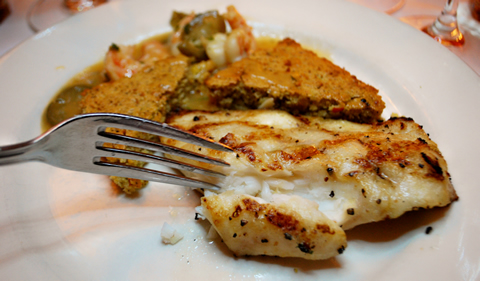Our annual survey of seafood in Southeast Louisiana this year counts down the 33 best seafood species that are enjoyed most in restaurants.

#16: Black Drum
Drum was once despised, almost to the point of being considered trash fish. Then wild-caught redfish was legally stolen from the commercial market by the recreational fishing cartel and disappeared from markets and restaurants. And suddenly we were eating quite a bit of drumfish.
And, you know. . . it's not bad at all. Drum is a close relative of redfish and similar in many ways. The best drum are called puppy drum--small ones, two or three pounds. It works for most uses to which we put speckled trout (another relative). Drum is about the same white-with-a-tinge-of-gray color, with flakes of approximately the same size and texture as speckled trout.
Drum grills up nicely--better than speckled trout does. It also is a very good fish for broiling. In fact, it's hard to think of a cooking method that makes puppy drum look or taste bad. Wait. I just thought of one. Don't eat it as sushi. (A parasite problem is possible.)
Among the best dishes using drumfish variously known as "barbecue drumfish" and "drumfish on the half shell." The fish goes onto the grill with skin and scales facing the fire. The top is brushed with garlic and herb butter, and it's left there until done, without turning. The skin gets black and crisp, insulating the fillet from overcooking and lending a sort of steamed effect.
Drum is the only fish of its kind that's still legally available to commercial fishermen in quantities that make fishing for it a viable proposition. It's caught on long trotlines that lend themselves to commercial fishing. The populations are stable and the resource is strong.
And, best of all, it's pretty and delicious.
Unacceptable alternative:Big drum. Fishermen often pull up drumfish thirty pounds or bigger. As is true for redfish, the bigger they get, the worse they are, with nasty bloodlines and a greater risk of parasitical worms.

